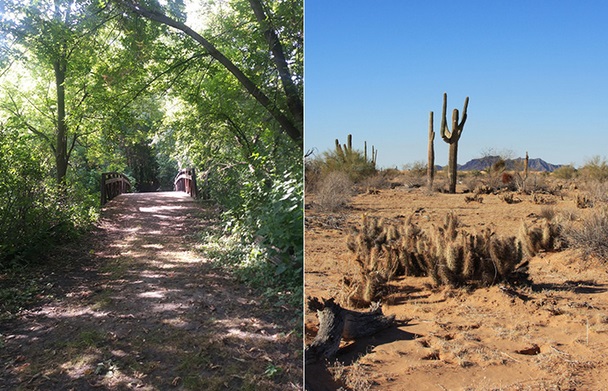
We know water as a resource we all rely upon, but how does its role in nature and society change throughout the different areas of the United States? When talking water, the Midwest may just be the most drastically different area from the Southwest desert, and that’s why I made the 1,125 mile trip from Albuquerque to Minneapolis last year: to investigate the similarities and disparities.
As my car pulls up to the U.S. Fish and Wildlife Midwest Region office, my groggy post-travel eyes can process only one thing: green. Even in the midst of the bustling city, the large office sits nestled in an alcove of trees—a testament to the abundance of water in the area. Hydrologist Jennifer Gruetzman (whom I would later accompany in monitoring fieldwork) guides me through the building. Large, glass windows allow for a romantic view: Typing in a cubicle on the 10th floor feels comparable to wading in the field.
In both the Southwest and the Midwest, water is coveted, leading to conflicts. This similarity, of course, is laced with a multitude of differences. As human activity and shifting weather patterns continue to deplete the Rio Grande of water, the biggest issue in the Southwest rings glaringly clear: With everyone staking claims to it, there’s just not enough water to go around. Hydrologists and other employees with the Fish and Wildlife Service Water Resource Division focus on resource distribution and use of the desert’s remaining water—and how to keep this use sustainable.
The Midwest may have enough water (they are, after all, renowned for it), but they face a number of alternative challenges. I travel to St. Croix Wetland Management District in west central Wisconsin and speak with Project Leader Bridget Olson. Wetland Management Districts are scattered across large landscapes. The main problem Olson reports has to do not with water scarcity but with pollution and damage to natural areas. She discusses the way ditches have destroyed wetland areas and outlines present-day restoration efforts. Conservation strategies include working closely with private landowners—placing conservation easements on properties, effectively “restricting building in that area and protecting all the cold water springs.” Another issue in the St. Croix area has to do with industrial groundwater use. Discussing the connections between groundwater extraction and surface wetland ecosystems, Olson laments the challenges in protecting both: explaining impacts of groundwater impacts on small wetlands.
Drainage is one of the biggest issues in the Midwest Region. Tile drainage, the extracting of water from beneath the Earth’s surface using underground “tiles” is a practice that can alter natural drainage through the soil and potentially pollute water. I speak with Doug Norris, the Minnesota State Department of Natural Resources Wetlands Program coordinator, who describes how agriculture “drained over 90 percent of the original wetlands in parts of Minnesota.” This loss of wetlands presents another concern–the subsequent depletion of aquifers—that is, groundwater. Lead hydrologist Josh Eash stresses the importance of water monitoring. “We’ve polluted so much of our surface water here in the Midwest that we’re now drawing from groundwater.”
I traveled to the Midwest to learn a bit about how the different arms of the Service complement and compare to each other. It’s easy to get caught in the perspective of the region you work from, but the United States boasts an incredible diversity of environment and culture. In the Southwest, we always have water on the mind; its scarcity makes it a hot commodity. Our growingly arid environment demands that we work toward conserving what little water we have. The Midwest, on the other hand, is one zone with a culture of abundant water pride. From fishing to boating to other water sports, the region relies on water and its protection. Whether in context of desert sand or Midwestern fields, water rules the way we live and thrive. It informs our cultures and lifestyles, our recreations and enjoyments, our wants and necessities. Everywhere, it demands active protection from depletion and pollution—it is the tie that binds us all together.
Indu Roychowdhury works with the U.S. Fish and Wildlife Service Water Resource Division in the Southwest Region.
More Conservation News – https://www.odumagazine.com/topics/headlines/conservation_odu_headlines/
